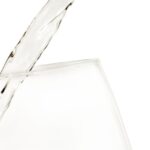Should I Drink Rum or Wine? A Comparative Guide to Choosing the Right Beverage
When deciding between a glass of rum and a glass of wine, you’re not just picking a drink—you’re also choosing between different cultural histories, flavor profiles, health benefits, and occasions. Both beverages have devoted followers, but which one is better for you? Let’s break it down.
The Basics: Rum and Wine Defined
Rum is a distilled spirit made from sugarcane byproducts such as molasses or sugarcane juice. It is often associated with tropical vibes, cocktails, and a versatile flavor range that includes light, spiced, dark, and aged varieties.
Wine, on the other hand, is a fermented beverage made from grapes. Its variations are primarily categorized into red, white, rosé, and sparkling wines. Unlike rum, wine is often seen as more refined, enjoyed with meals, and associated with centuries of tradition.
Alcohol Content
One of the first differences between rum and wine is the alcohol by volume (ABV).
- Rum: Typically has an ABV of 35–50%, depending on the brand and type. This makes rum significantly stronger than wine.
- Wine: Generally has an ABV of 10–15%, depending on whether it’s red, white, or sparkling wine.
If you’re looking for a lighter buzz or a beverage to sip over a longer period, wine might be the better choice. On the other hand, rum’s higher alcohol content makes it a more potent option for cocktails or celebratory shots.
Calorie Count
For health-conscious drinkers, calories are an important factor to consider.
- Rum: A 1.5-ounce serving of rum has about 96 calories, and since it’s low in carbs and sugars (especially unflavored varieties), it’s a popular choice for those on keto or low-carb diets. However, sweetened or flavored rums may have additional calories.
- Wine: A 5-ounce glass of wine typically ranges from 120 to 150 calories. Red wines have more calories than whites, while dry wines generally contain fewer sugars and calories than sweet or dessert wines.
If calorie consumption is a concern, unflavored rum paired with a low-calorie mixer like sparkling water or diet soda can be a better choice than wine.
Flavor Profiles and Pairings
When it comes to taste and how well the beverage pairs with food, both rum and wine offer distinct experiences.
- Rum: The flavor of rum varies significantly depending on its type. Light rum is mild and ideal for tropical cocktails, while dark and aged rums have rich, complex flavors with caramel, vanilla, and spice notes—rum pairs best with tropical cuisines, barbecues, or desserts like rum cake.
- Wine: The flavor spectrum of wine ranges from crisp and refreshing whites to bold and tannic reds. Wine is often designed to complement meals and can be paired with everything from pasta and steak to seafood and cheese platters.
For a gourmet dining experience, wine is usually the go-to, but if you’re enjoying a casual gathering or dessert-focused menu, rum could steal the spotlight.
Health Benefits
Both rum and wine are linked to potential health benefits when consumed in moderation, but their effects are slightly different.
- Rum: The high alcohol content in rum may help relax muscles, reduce stress, and even improve sleep quality when consumed sparingly. However, its benefits are more anecdotal than scientifically proven.
- Wine: Wine, especially red wine, is often celebrated for its health benefits due to the presence of antioxidants like resveratrol. These compounds may support heart health, reduce inflammation, and even improve longevity. Wine also contains polyphenols, which are believed to enhance gut health.
If health benefits are a deciding factor, wine—particularly red wine—has a stronger scientific backing compared to rum.
💡 It is advisable to drink a maximum of three (3) glasses per week (whether your preference is cocktails or to sip neat). Between every glass, drink water to help your body reduce dehydration.
Cultural Significance
The cultural contexts of rum and wine play a role in how they’re enjoyed.
- Rum: Rum is often tied to Caribbean culture and history. It’s celebrated in island festivals, pirate lore, and tropical cocktails like mojitos and piña coladas. Rum is associated with fun, freedom, and relaxation.
- Wine: Wine has deep roots in European culture and is often considered a symbol of sophistication and tradition. It’s associated with fine dining, celebrations, and religious ceremonies.
If you’re aiming for a relaxed, festive atmosphere, rum might be the way to go. For formal events or meals, wine is usually a safer choice.
Cocktail Versatility
Rum and wine also differ in their versatility as cocktail ingredients.
- Rum: Rum shines in a wide variety of cocktails, from classics like the daiquiri, mai tai, and rum punch to hot drinks like hot buttered rum. Its adaptability to sweet and fruity flavors makes it ideal for creative mixing.
- Wine: While wine is not typically associated with cocktails, it’s an essential ingredient in sangrias, mimosas, and spritzers. It’s less versatile than rum in this regard but still has its place in mixed drinks.
For those who love experimenting with cocktail recipes, rum offers more options.
Social Context
What kind of social setting are you drinking in? This can also influence your choice.
- Rum: Great for casual parties, beach vacations, or tiki-themed events. Rum-based cocktails often create a laid-back, fun vibe.
- Wine: Perfect for dinner parties, romantic evenings, or classy events. A bottle of wine can set a more elegant and intimate tone.
If you’re looking for a drink to complement a specific type of gathering, the social context may guide your decision.
Cost
The price range for rum and wine varies widely.
- Rum: A standard bottle of rum typically costs $15–$40, with premium aged rums reaching $50 or more.
- Wine: A bottle of wine can range from $10 for a decent table wine to several hundred dollars for rare vintages.
If you’re on a budget, rum is often a more affordable option, especially since its higher ABV means you need less of it to feel the effects.
Long-Term Storage
Storage is another aspect to consider.
- Rum: Thanks to its high alcohol content, rum has an almost indefinite shelf life if stored properly. It doesn’t need to be consumed within a specific time frame once opened.
- Wine: Wine is more sensitive to storage conditions. An unopened bottle of wine can age gracefully, but once opened, it has a limited lifespan—typically a few days to a week.
If you’re looking for a drink that you can keep on hand without worrying about spoilage, rum has the advantage.
Ultimately, the choice between rum and wine depends on your personal preferences, health goals, and the occasion.
- Choose rum if you enjoy bold, versatile spirits, want a lower-calorie option, or are looking to mix up exciting cocktails. Rum is perfect for casual gatherings, tropical themes, or desserts.
- Opt for wine if you’re drawn to elegant, food-friendly beverages with health benefits like antioxidants. Wine is ideal for formal dinners, intimate settings, or sipping solo.
In the end, both rum and wine have their merits. The decision comes down to what suits your taste, lifestyle, and the moment you’re celebrating.
Love rum? Don’t miss out! Get curated content right to your inbox.
🩺By considering factors like caloric impact, alcohol content, taste, and setting, you can make an informed decision and enjoy your drink. Remember to always consult your doctor or nutritionist before making any decisions about alcohol consumption. If you have an alcohol use disorder, please avoid consuming any type of alcoholic beverage.
Source of information
Mayo Clinic — Red wine and resveratrol: Good for your heart?
Sascha Fitness (Fitness Coach and Entrepreneur)— Does liquor make you get fat?
Coravin — How Much Alcohol is in Wine? A Complete Guide
The image of the article is created via Canva.com





